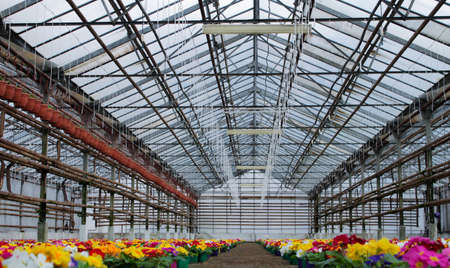1. Introduction to Swales and Contour Lines
If you’re looking to make your American garden or landscape more sustainable, learning about swales and contour lines is a great place to start. These techniques are key to managing water efficiently—something that’s important whether you live in the dry Southwest, the rainy Pacific Northwest, or anywhere in between.
What Are Swales?
A swale is simply a shallow ditch with a berm (a small mound) on the downhill side. It’s built along the contour of the land, which means it follows the natural shape of your property. Instead of letting rainwater rush away, swales help slow it down and soak it into the ground—right where your plants need it.
Benefits of Swales in American Landscapes
| Benefit | Description |
|---|---|
| Water Conservation | Catches rainwater and helps reduce irrigation needs |
| Soil Health | Prevents erosion and improves soil structure |
| Plant Growth | Keeps moisture available for longer periods |
| Pollution Control | Slows runoff, helping filter pollutants before they reach waterways |
What Are Contour Lines?
Contour lines are imaginary lines you can draw on a map—or mark out in your yard—that connect points of equal elevation. When you build swales on these lines, they work most effectively because water naturally wants to flow straight downhill. By following the contours, you help spread water evenly across your property instead of letting it wash out one area.
Why Use Swales and Contour Lines Together?
Combining swales and contour lines helps you manage water in a smart, sustainable way. This approach is especially useful in American gardens where drought, heavy rains, or sloped yards can create challenges. Plus, using these methods supports healthy plants and reduces maintenance over time.
Common Uses for Swales and Contour Lines in the U.S.
- Directing stormwater away from building foundations
- Catching runoff from driveways or roofs for use in garden beds
- Creating lush pollinator strips or native plant areas along slopes
- Improving orchard or vegetable garden productivity by keeping soil moist longer
By starting with the basics of swales and contour lines, you’ll be well on your way to making your landscape more resilient and eco-friendly—no matter where you live in the United States.
2. Planning and Site Assessment
Understanding Your Lands Topography
Before you start digging swales or marking contour lines, it’s important to really get to know your property. Topography is the shape and slope of your land, and it plays a big role in how water moves across your yard or farm. Use a topographic map or simply walk your property after a rainstorm to see where water flows and pools. Look for natural dips, high spots, and the general direction water takes.
Simple Tools for Mapping Contour Lines
You don’t need fancy equipment to find contour lines. Many gardeners use basic tools like an A-frame level, a hose filled with water (water level), or even smartphone apps that use GPS. These tools help you mark lines of equal elevation, which are essential for placing swales in the right spots.
Assessing Soil Type and Drainage
The type of soil you have affects how fast water soaks in and drains away. Here’s a quick way to assess your soil:
| Soil Type | How to Identify | Water Behavior |
|---|---|---|
| Sandy | Feels gritty, falls apart easily | Drains quickly, may need deeper swales |
| Clay | Feels sticky, forms tight balls | Holds water longer, swales should be shallower |
| Loam | Balanced feel, crumbly texture | Ideal drainage, works well with most swale designs |
Testing Drainage
Dig a hole about 1 foot deep and fill it with water. If it drains within 2-3 hours, you have good drainage. If it takes longer, you’ll want to consider that when planning swale depth and placement.
Choosing Swale Locations Based on Assessment
Once you’ve mapped your contours and tested your soil, look for areas where water naturally runs off or erodes the ground. Place swales along the contour lines just above these trouble spots. This helps slow down water, spread it out, and give it time to soak in—great for both gardens and larger landscapes.
Quick Checklist for Site Assessment:
- Walk your land after rainfall to observe water flow patterns.
- Use simple tools to mark contour lines.
- Identify soil type using feel and texture tests.
- Test drainage by timing how long it takes water to disappear from a test hole.
- Select swale locations above erosion-prone areas or where water tends to pool.
Proper planning and site assessment make sure your swales work efficiently, helping you manage water better while protecting your soil and plants.

3. Designing Swales for Your Landscape
Step-by-Step Guide to Marking Contour Lines
Before you start digging, its important to mark out the contour lines on your yard. Contour lines show the points of equal elevation and help guide where your swales should go. Here’s how you can do it in your backyard:
Tools You’ll Need
- A-frame level or a long carpenter’s level with stakes
- Measuring tape
- Flags or marking paint
Steps to Mark Contours
- Choose a Starting Point: Find the highest spot where water runs off.
- Set Up Your Level: Place the A-frame or level on the ground and adjust until it is perfectly level.
- Mark Each Spot: Use flags or paint to mark each spot along that elevation as you move across the landscape.
- Connect the Dots: Once you’ve marked several points, connect them to form your contour line. This is where your swale will go!
Sizing Swales for American Yards and Gardens
The size of your swale depends on how much water you want to capture, your soil type, and the size of your property. Here’s a simple table to help you decide:
| Yard Size | Recommended Swale Width | Recommended Swale Depth |
|---|---|---|
| Small (under 1/8 acre) | 12–18 inches | 6–8 inches |
| Medium (1/8 – 1/2 acre) | 18–24 inches | 8–12 inches |
| Large (over 1/2 acre) | 24–36 inches | 12–18 inches |
If your soil is sandy, make your swale a bit deeper; if it’s clay-heavy, keep it shallower but wider to prevent water from pooling for too long.
Planning Swale Placement in American Landscapes
- Avoid Foundations: Always place swales at least 10 feet away from house foundations and other structures.
- Follow Natural Land Shape: Place swales along natural contours so they blend in and work with gravity.
- Create Multiple Swales If Needed: For larger yards or sloped properties, stagger several smaller swales down the slope instead of one big one.
- Add Plantings: Plant native grasses or shrubs along the berm (the raised side) of the swale. This helps slow water even more and prevents erosion.
Troubleshooting Tips
- If water flows over the top during heavy rain, widen or deepen your swale, or add another one above it.
- If you notice standing water for days after rainfall, try adding organic matter to improve drainage or re-grade the bottom slightly downhill toward an overflow area.
This approach ensures your swales are practical for typical American yards, whether in suburban neighborhoods or rural settings. Proper design means less runoff, healthier gardens, and smarter water management right at home.
4. Construction and Installation Tips
Understanding What You’ll Need
Before you start building swales or marking contour lines, it’s important to gather the right tools and materials. Most of these can be found at your local hardware store or garden center in the U.S., making the process accessible for most homeowners and DIY enthusiasts.
Common Tools and Materials
| Tool/Material | Purpose | Where to Find |
|---|---|---|
| Shovels & Spades | Digging swales and moving soil | Hardware stores, garden centers |
| A-Frame Level or Laser Level | Marking accurate contour lines on slopes | Online, hardware stores, rental centers |
| String Line & Stakes | Lining up swale paths along contours | Home improvement stores, gardening aisles |
| Wheelbarrow | Transporting soil and mulch | Garden supply stores, home centers |
| Mulch or Straw | Covers bare soil to prevent erosion after construction | Lawn & garden stores, nurseries, farm supply shops |
| Native Plants or Grasses | Stabilize soil in and around swales | Local nurseries, native plant sales, conservation groups |
Step-by-Step Guide to Building Swales and Marking Contours
Selecting the Right Location
Look for gentle slopes where water naturally flows during heavy rain. Avoid areas with underground utilities or tree roots.
How to Mark Contour Lines Easily
An A-frame level is a popular DIY tool for this task. To use it:
- Create an A-frame using three wooden poles and a string with a weight (plumb line).
- Place the legs of the A-frame on the ground and move them until the plumb line hangs straight down at a marked center point—this means both feet are at the same elevation.
- Mark this point with a stake and repeat across your slope to outline your contour path.
Excavating Your Swale: Simple Steps for Success
- Start digging along your marked contour line. Swales are typically shallow, around 6–18 inches deep and 18–36 inches wide, but adjust based on your site’s needs.
- Pile the excavated soil on the downhill side to form a berm. This helps catch more water.
- Smooth out the bottom of the swale so water spreads evenly instead of pooling in one spot.
Lining and Planting Your Swale for Longevity
- Add a layer of straw or mulch to help prevent weeds and retain moisture.
- Plant native grasses or wildflowers on the berm for stability—choose species common in your region for best results.
Troubleshooting Common Issues
- If water isn’t spreading evenly, re-check your contour accuracy with your level tool.
- If you notice erosion after heavy rains, reinforce berms with additional mulch or more plants with strong root systems.
Quick Reference Table: Swale Dimensions by Yard Size (Typical U.S. Lawns)
| Lawn Size (sq ft) | Swale Depth (inches) | Berm Width (inches) |
|---|---|---|
| < 2,000 | 6–10 | 12–18 |
| 2,000–5,000 | 10–14 | 18–24 |
| > 5,000 | 14–18 | 24–36 |
This practical approach makes it easy for anyone in the U.S. to use swales and contour lines for effective water management, no matter their yard size or experience level.
5. Maintenance and Best Practices
Keeping Swales Functional Year-Round
To make sure your swales continue to manage water effectively, routine maintenance is key. Leaves, grass clippings, and other debris can clog your swale and prevent proper drainage. In American climates with snowy winters or dry summers, regular checks are especially important.
Maintenance Checklist
| Task | Frequency | Tips |
|---|---|---|
| Remove debris (leaves, branches) | Monthly or after storms | Use a rake or gloved hands; check after heavy rainfall or wind |
| Check for erosion or channel damage | Every season | Look for bare soil or washed-out areas; add mulch or rocks as needed |
| Mow surrounding grass | As needed during growing season | Keep grass slightly taller (3-4 inches) for better water absorption |
| Inspect plants in and around swale | Twice a year (spring and fall) | Replace dead plants; choose native species for your region |
| Test infiltration rate | Once a year | Puddle water in the swale to see how fast it drains; slow draining may mean soil compaction |
Best Practices for Water Conservation Across the U.S.
The climate in America varies from arid deserts to humid forests, so its smart to adapt your swale care to local weather. Here’s how:
Northern States (Cold Winters)
- Avoid salt runoff from driveways—use sand instead near swales.
- Add extra mulch before winter to prevent soil freeze and erosion.
- Clear snow carefully to avoid damaging the shape of the swale.
Southern States (Hot Summers)
- Select drought-tolerant native plants to reduce watering needs.
- Mulch generously to keep soil moist and cool.
- Check for cracks or dry patches that may need more organic matter.
Western States (Drought-Prone Areas)
- Cultivate deep-rooted native grasses and wildflowers for stability.
- Create small check dams with rocks to slow down water flow during rare rains.
- Avoid over-irrigating lawns uphill from your swale.
Eastern States (Frequent Rainfall)
- Add extra outlets or overflow channels if heavy rain is common.
- Plant groundcovers on banks to fight erosion.
- Aerate compacted soils annually for better drainage.
Troubleshooting Common Issues
| Problem | Solution |
|---|---|
| Ponding water that won’t drain away | Add compost or sand to improve soil drainage; check slope of the swale matches contour lines. |
| Erosion in channel during heavy rainstorms | Add rocks or logs as barriers; plant more roots along edges. |
| Lack of plant growth in the swale bed | Select hardy, moisture-loving natives; amend soil with compost as needed. |
If you follow these guidelines, your swales will help conserve water, prevent flooding, and stay effective all year—no matter where you live in the U.S.


